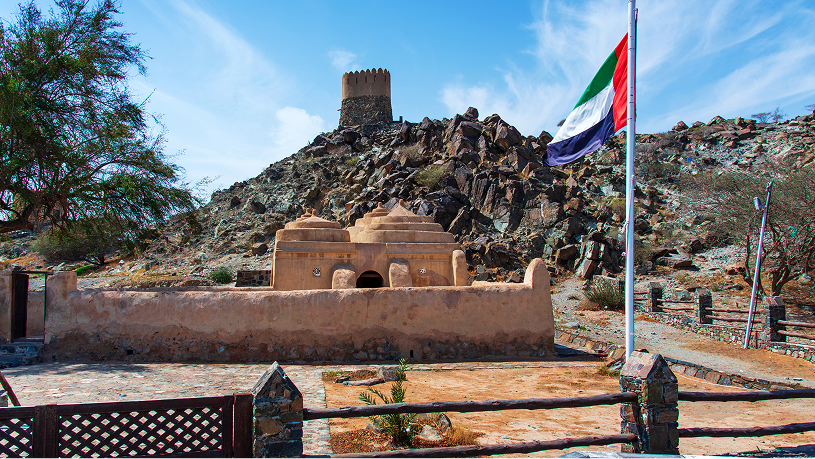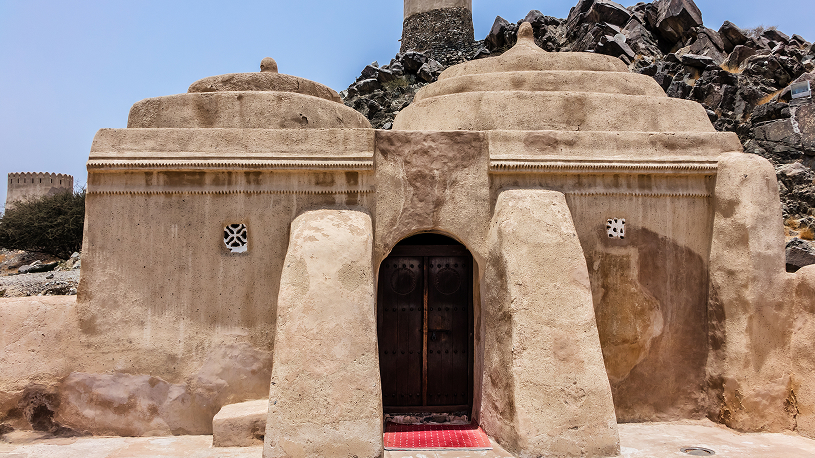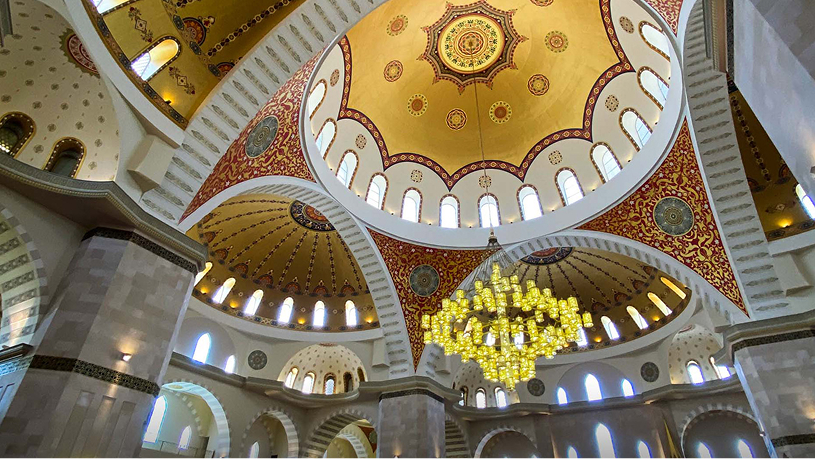
In the village of Al-Badiyah, around forty kilometers north of the emirate’s capital, you come upon the small, reddish-mud and stone structure of Al Badiyah Mosque. The village itself is ancient, believed to have been inhabited since 3000 BC; it rises from terraced fields behind low watch-towers on the hills. The mosque’s origins are still a mystery – most scholars date it to about the 15th century, though the exact builder is unknown. What remains clear is that this building – compact and modest – has served continuously for the five daily prayers, making it a living link to the early Islamic architectural heritage of the region.

The design is unpretentious yet ingeniously crafted: four domes rest on a single central pillar, effectively dividing the interior into four modest halls; the walls are built of local stone and mud bricks; small square windows allow light to play softly across the space. The mosque is surrounded by low walls, and nearby a sidr tree stands old and sturdy, whispering of generations who have gathered here. For Fujairah, this tiny mosque is a profound anchor: it reminds locals and visitors alike of a time when community, faith, and craft were entwined in their simplest form.
As you shift to the city of Fujairah itself, the mood changes. The modern landmark of Sheikh Zayed Mosque rises along Mohammed bin Matar Road, its white marble façade shining gently in the Emirati sun. Opened in 2015, it holds around 28,000 worshippers and spans an area of some 39,000 m², making it the second-largest mosque in the country. The architecture draws from Ottoman and Moorish traditions: 65 domes, six minarets reaching roughly eighty to ninety meters, arches, and an expansive courtyard with fountains and gardens. Within the interior, warm tones of red and gold dominate: the huge woven carpet, imported chandeliers, and the sculptural play of light and arches all combine to give the space a strong sense of presence – without spectacle. The project was overseen by consulting engineers over a period of about ten years from concept to opening.

Together these two mosques articulate a cultural range: the older keeps alive memory-work of generations, craft, and the original settlement life in the mountain-and-sea zone; the newer reflects a vision of community at scale, of an emirate looking outward and upward. That range matters for Fujairah – because the emirate does not sit in the shadow of glitz alone but holds its history in plain sight, and uses its landmarks to give shape to its people’s life. Visitors who pause in Al-Badiyah might feel the hush of centuries; those who walk the courtyard of Sheikh Zayed Mosque sense a breath of modern faith and belonging. In that, the story is neither grandiose nor dramatic, but simply meaningful.


.png)
.png)
.png)
.png)
